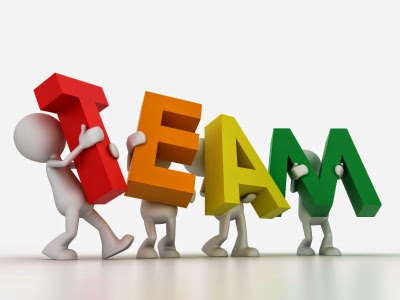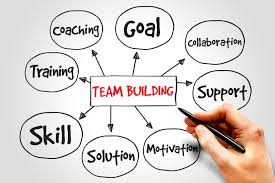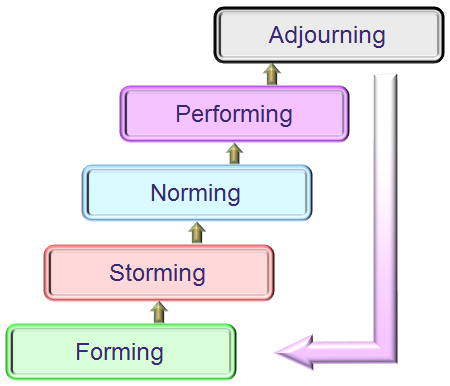The Truth About Team Building

INTRODUCTION
 We have so often heard about companies and organisations building teams and we might have even tried to build teams among ourselves, but do we really have a good idea of what team building is about?
We have so often heard about companies and organisations building teams and we might have even tried to build teams among ourselves, but do we really have a good idea of what team building is about?
Yes, team building refers to that method of enhancing or developing collective or collaborative performance and we are all familiar with this concept. However, many of us still fail at building teams that really work. One of the main reasons is our lack of knowledge or understanding about what building teams really is.
TEAM BUILDING PRINCIPLES:
- We often fail at building teams because most of the time, we are unsure of how to start making teams. In many cases, building teams become ineffective because advanced techniques are used while there is a lack of commitment to shared goals or objectives.
- We also fail at building teams when the techniques we employ are out of sequence, when too many off-site activities do not seem to add any real and lasting value because members of the group – or what would have been a team – take the off-site activities as opportunities for taking a break rather than opportunities for the achievement of the specific goals of the team building activity.
- There is a simple yet effective way of building teams that many of us tend to overlook. This simple yet effective process involves establishing ownership of common or shared goals, removing blocks or inhibitors to the achievement of such goals and objectives, introducing enablers to help achieve goals and objectives, and using team building activities and processes in an appropriate sequence to raise performance step-by-step – very much like climbing a ladder taking one rung at a time.
- The foundation of building teams should be giving a commitment to common or shared goals. Individuals or members should understand that this commitment to common goals differentiates a team from a mere group. Many people mistake their commitment to their own goals as a commitment to the team. Therefore, facilitators should see to it that each and every member understands that teams require collaborative effort and commitment, not a commitment to individual wants and desires.
- Building teams are more than just putting individuals together in a group and giving them a name. Building teams require a deep understanding of the commitment towards shared efforts and common goals. The whole process of making teams requires specific techniques and strategies needed in establishing shared goals and in developing steps that will bring the team closer to its vision or objectives.
STAGES OF TEAM BUILDING:
The different stages of team development are forming, storming, norming, performing and adjourning.
Let’s explore each stage and see how as a leader you can manage your staff to ensure that your team progresses through each stage of team building effectively.
1.FORMING
This when a new team is created. It can be that the team has just been created for a particular project or as simple as a new person joining an existing team. During this stage team members are usually ‘feeling’ their way within the group. They will often be polite, keep feelings and strong opinions to themselves, and sometimes feel a little guarded.
Once team members feel as though they belong to the group, the forming stage is complete.
2. STORMING
The second stage of team building is Storming. Staff members feel as though they are a part of the team and are now looking to resolve key differences within the team. Conflict or strong debate is usually a key indicator as team members look to find their place within the team by expressing key concerns, beliefs on how things need to be achieved, leadership responsibility and who is responsible for what.
As a leader, don’t be afraid of the conflict that often results from this stage. If managed correctly it is a healthy process that can allow for teams to improve their understanding and value of differences. If however, as the leader, you don’t manage the conflict appropriately, teams can often get stuck in this stage and struggle to progress.
As the team’s conflict resolves and the implied leadership roles are accepted the storming stage of team building is complete.
3.NORMING
This is the settling stage of team building. As team members settle into their implied roles, they start to feel good and identify with the team.
Team members start to share feelings, opinions and real cohesion starts to develop. Teams are starting to share success and develop personal relationships.
4.PERFORMING:
Having developed as a team, the performing stage sees the group as being fully developed. Often the hardest stage for teams to experience, it is characterised by staff working well with everyone, teams devoting their energy to getting the job done and a willingness to experiment with problem-solving.
5.ADJOURNING
This is the final stage of team building. It involves the team either disbanding because their need or function is no longer required. For example, they may have achieved their goals. Or the second reason for adjourning is that the norms that were previously developed may no longer be suitable for the team. This may be a result of a new team member leaving, a change in leadership or business function.
As a leader, it is important to be aware of and appreciate the different stages of team building. By allowing a team to fulfil each stage requirement you are providing them with the foundation to move, grow and develop.






